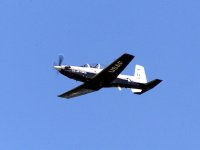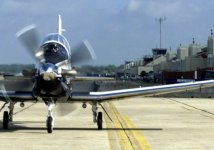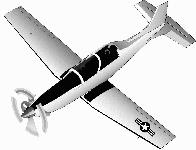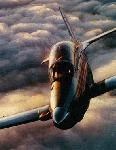








The current T-6A Texan II program calls for buying up to 711 production aircraft (372 for the Air Force and 339 for the Navy) from Raytheon Aircraft Co., Wichita, Kan., at an estimated cost of $4 billion. This numbre may increase to some 860 JPATS aircraft, based on projections of the number of aviators both services need and the number of joint squadrons they must develop. The Flight Training System Program Office at Wright-Patterson AFB is managing the acquisition of the Texan. JPATS is seeking to maximize the benefits of allowing the prime contractor to operate using commercial practices with its subcontractors and vendors. The program will be conducted using commercial style practices to the greatest extent possible; however, due to the nature of the acquisition strategy, current government acquisition, auditing and domestic content policies will continue to be applied to the prime.
In response to FY89 Congressional direction, DoD submitted the 1989 Trainer Aircraft Master Plan which documented the status of USAF and USN pilot training programs. In December 1990 the Joint Requirements Oversight Council validated the JPATS Mission Need Statement, with a need for nearly 900 trainer aircraft. Operational requirements were subsequently codified in the JPATS Operational Requirements Document. In January 1992 JPATS was designated a Defense Acquisition Pilot Program.The JPATS selection process began formally on May 18, 1994, when the request for proposal was issued. The source selection process included assessment of each contestant's proposals and flight evaluations of the candidate aircraft. This was one of the longest and most closely scrutinized source-selection competitions ever." The selection process took fourteen months and entailed evaluation of seven aircraft, seven cockpit mockups, and thousands of pages of contractor proposals.
Raytheon was awarded the contract Feb. 5, 1996. The US General Accounting Office denied protests lodged by Cessna Aircraft Company against the selection of Raytheon, and an lier protest, lodged by Rockwell, was also denied. The contract contains a nine year period of performance through FY2004 (including production options). The production follow-on will run through FY2017. The total program value is expected to be approximately $4 billion. The results of the ground-based training system source selection were announced on 21 April 1997. Flight Safety Services Corp., Flushing N.Y., is developing the ground-based training system for the T-6A. Hughes Training, Inc. was the other competing finalist not chosen to develop the Ground Based Training System. Production of the JPATS began with the award of the Lot 2 option for three aircraft to Raytheon Aircraft Co., in February l996. On Sept. 23, l996, the Air Force awarded a $31 million Lot 3 contract option to RAC for the next six JPATS production aircraft, technical manuals, and engineering/management/support data.
The first aircraft was assigned to the 12th Flying Training Wing, Randolph AFB, where it is used to train the first Air Force and Navy T-6A instructor pilots, who form the initial cadre of instructors at Laughlin AFB, Texas. Follow-on aircraft will be assigned to Vance AFB, Okla.; Columbus AFB, Miss.; and Sheppard AFB, Texas. Current plans call for continued aircraft production through 2017. Delivery of the first production aircraft was slated for May 1999 at Randolph, and actually took place in May 2000. The initial value of the ground-based training system contract with all options is for approximately $202 million through 2005, and approximately $500 million over a 24-year period.
The Navy will begin receiving the T-6A in November 2002 at Naval Air Station (NAS) Whiting Field in Milton, Fla. Follow-on naval air stations include NAS Corpus Christi, Texas, and NAS Pensacola, Fla. Air Force initial operational capability (IOC) for the T-6A is planned for 2001, with Navy IOC scheduled for 2003. The original AT-6 Texan advanced trainer was one of the most widely used aircraft in history. Evolving from the BC-1 basic combat trainer ordered in 1937, 15,495 Texans were built between 1938 and 1945. The USAAF procured 10,057 AT-6s; others went to the Navy as SNJs and to more than 30 Allied nations. Most AAF fighter pilots trained in AT-6s prior to graduation from flying school. Many of the "Spitfire" and "Hurricane" pilots in the Battle of Britain trained in Canada in "Harvards," the British version of the AT-6. To comply with neutrality laws, U.S. built Harvards were flown north to the border and were pushed across. In 1948, Texans still in USAF service were redesignated as T-6 when the AT, BT and PT aircraft designations were abandoned.Specifications | |
| Length overall | 33 ft 4 in / 10.16 m |
| Wing span | 33 ft 5 in / 10.18 m |
| Height overall | 10 ft 8 in / 3.25 m |
| Wing aspect ratio | 6.29 |
| Maximum internal fuel | 149.0 Imp gal / 677.5 liters |
| Basic weight empty | 4707 lb / 2135 kg |
| Design maximum take-off | 6300 lb / 2857 kg |
| POWERPLANT |
Pratt & Whitney PT6A-68 turboprop Hartzell four blade propeller Engine rating 1100 SHP (continuous) |
| Average unit cost (TY$) | $5M |





